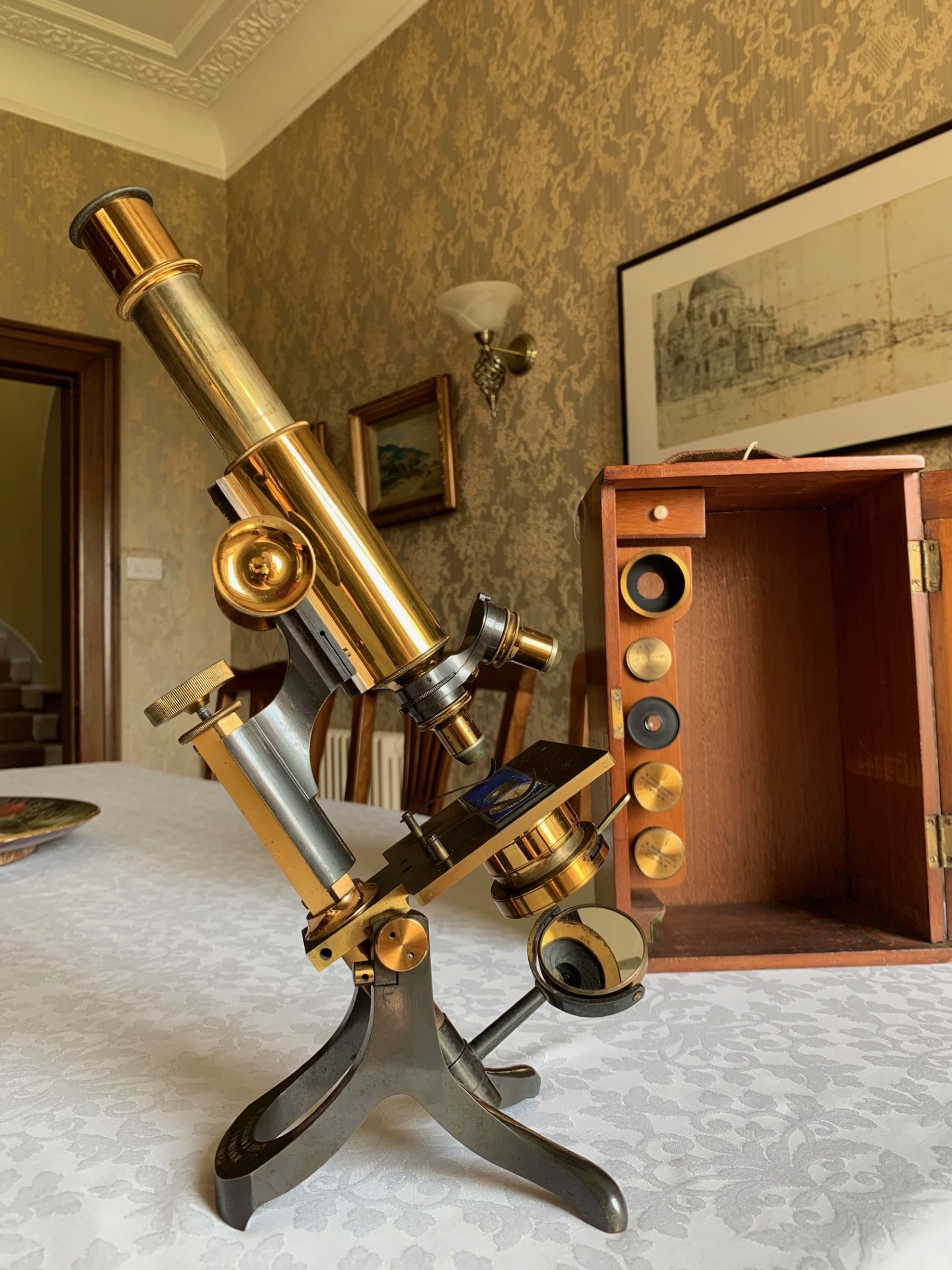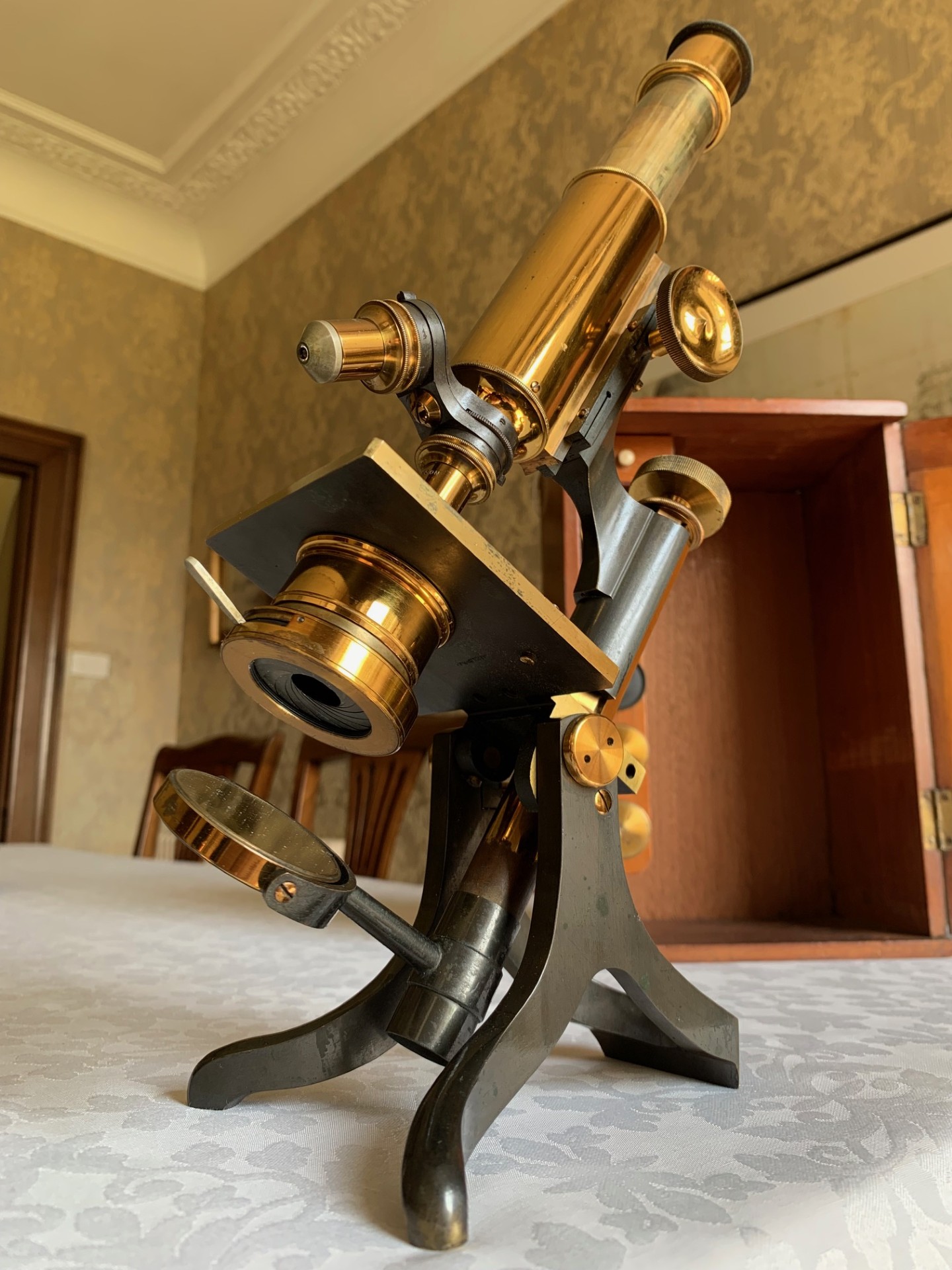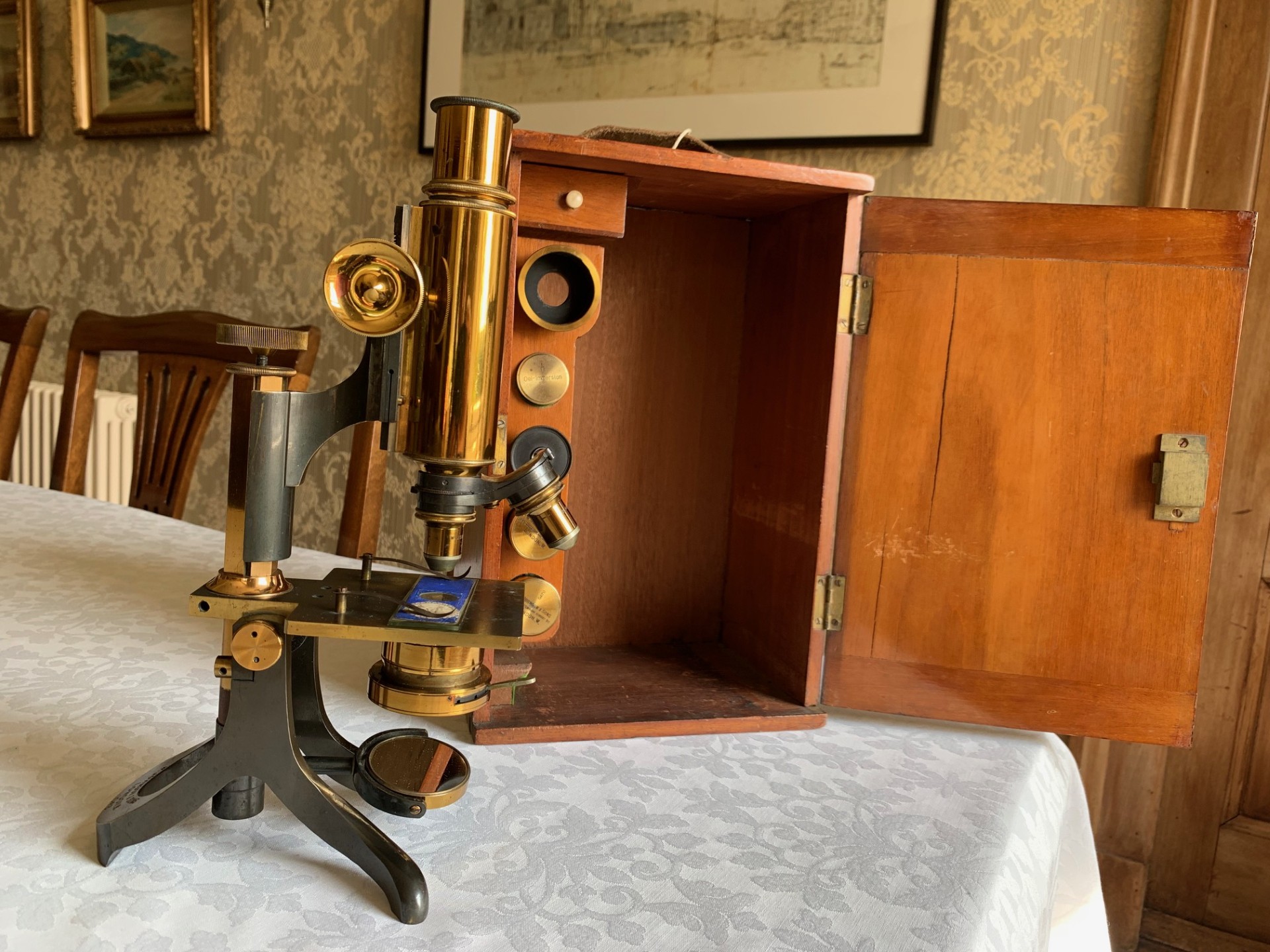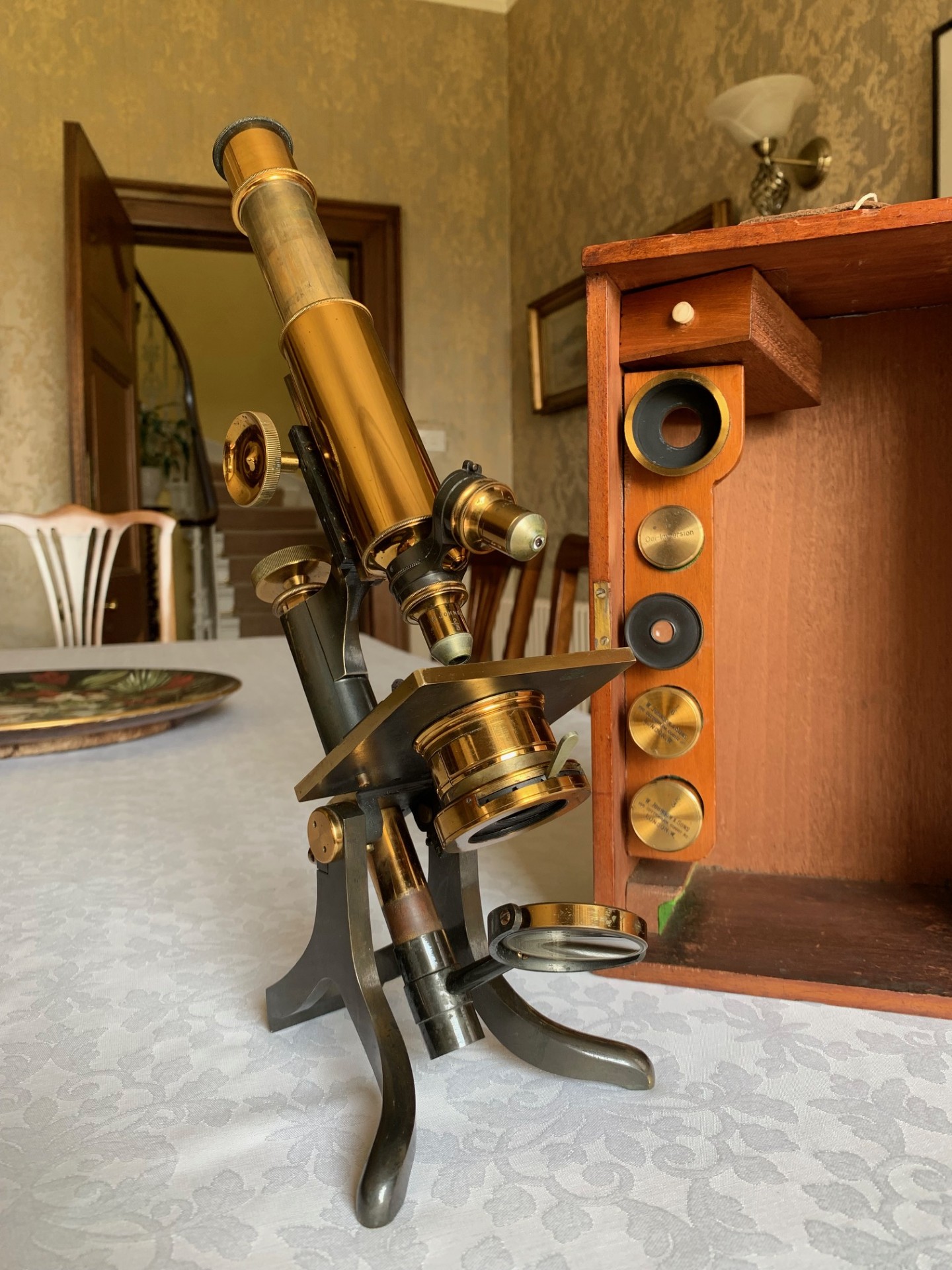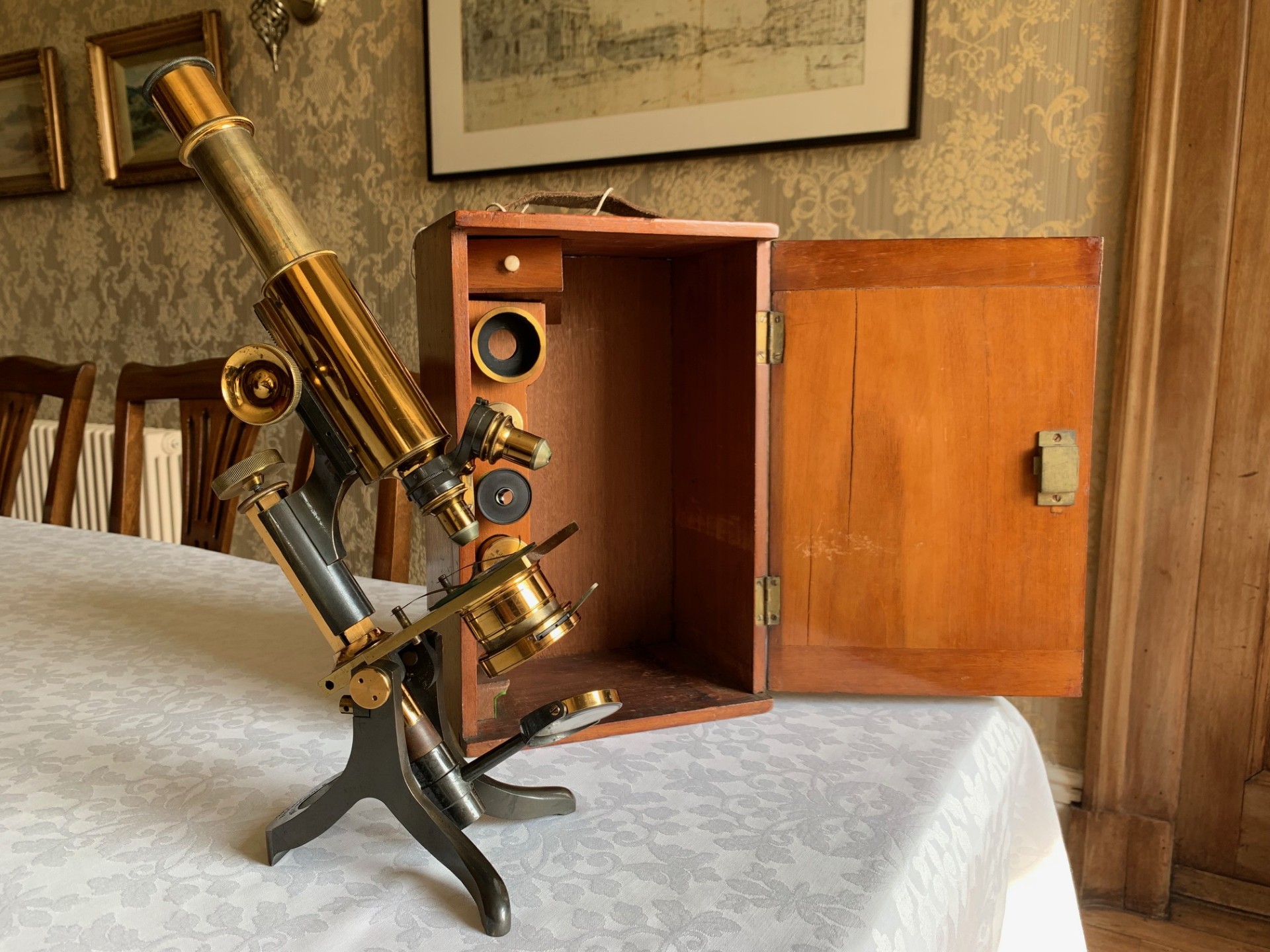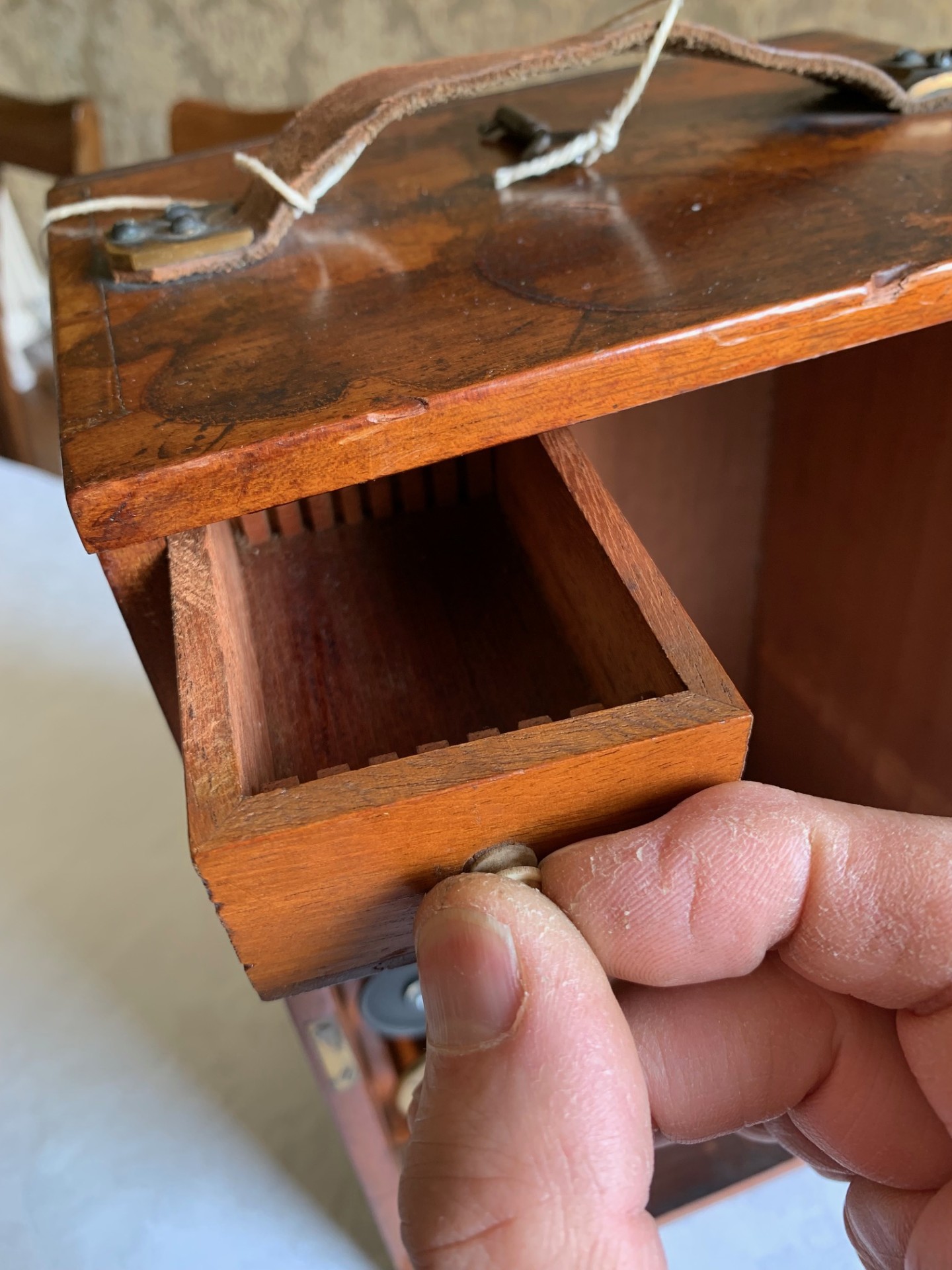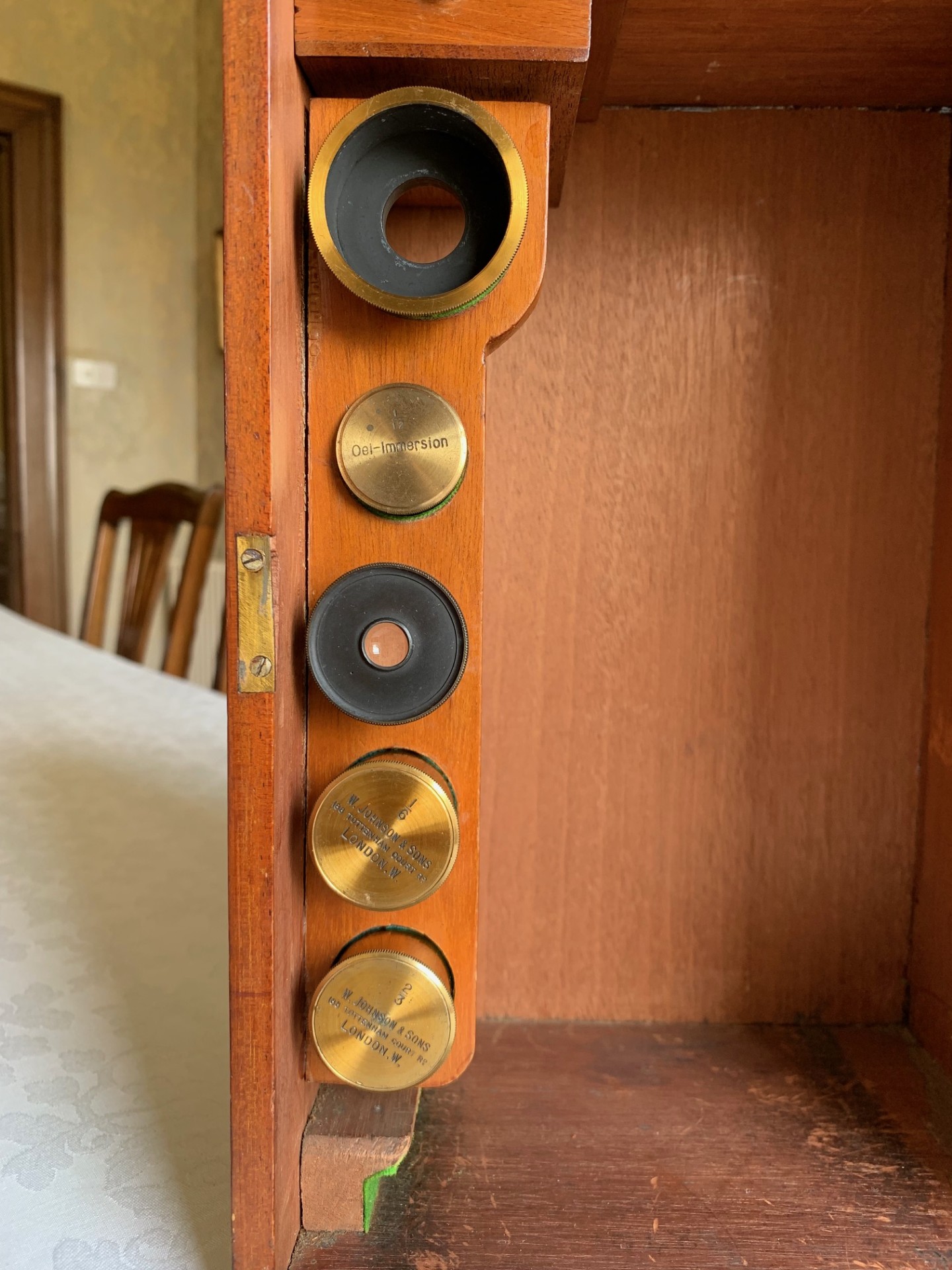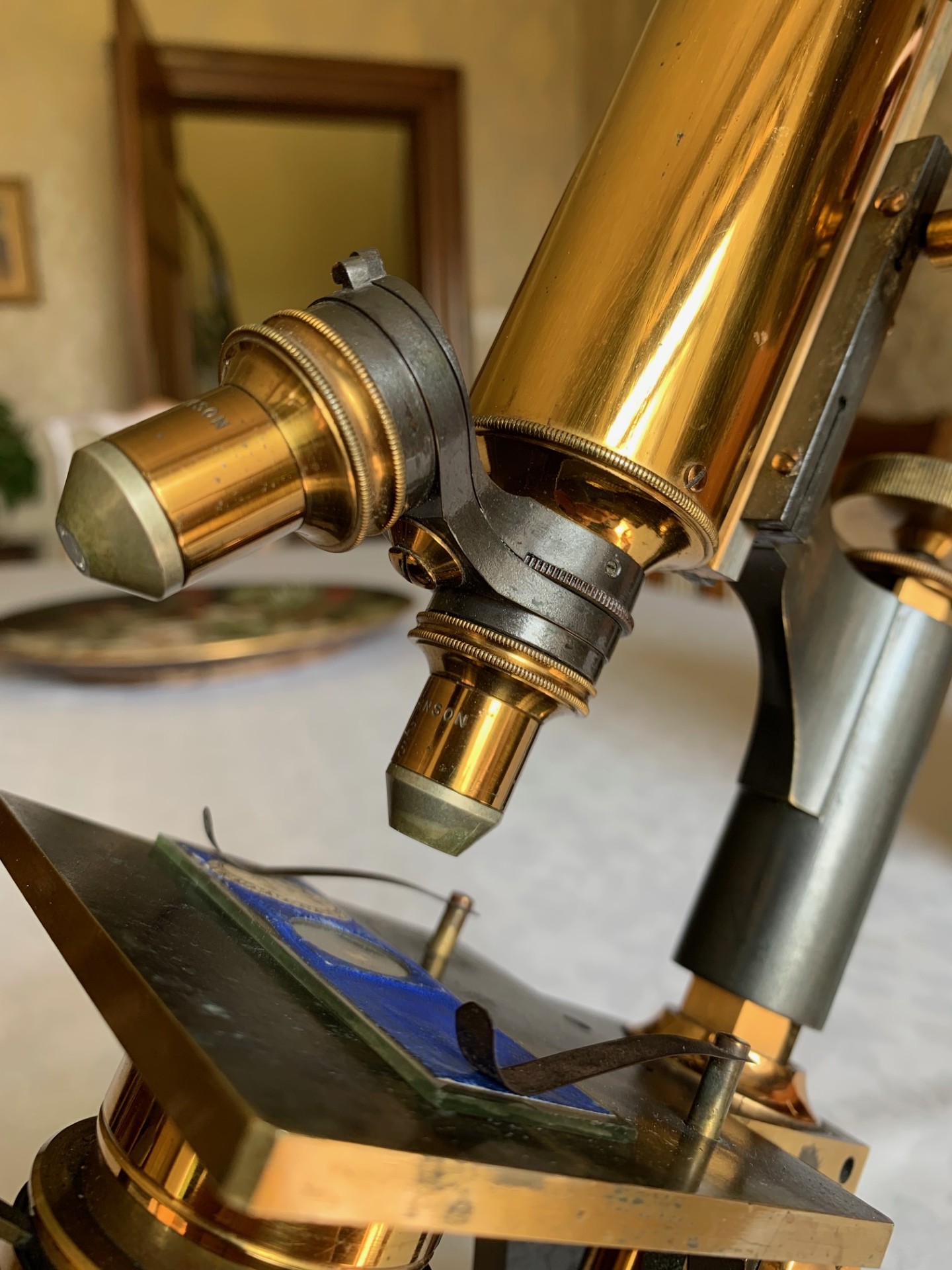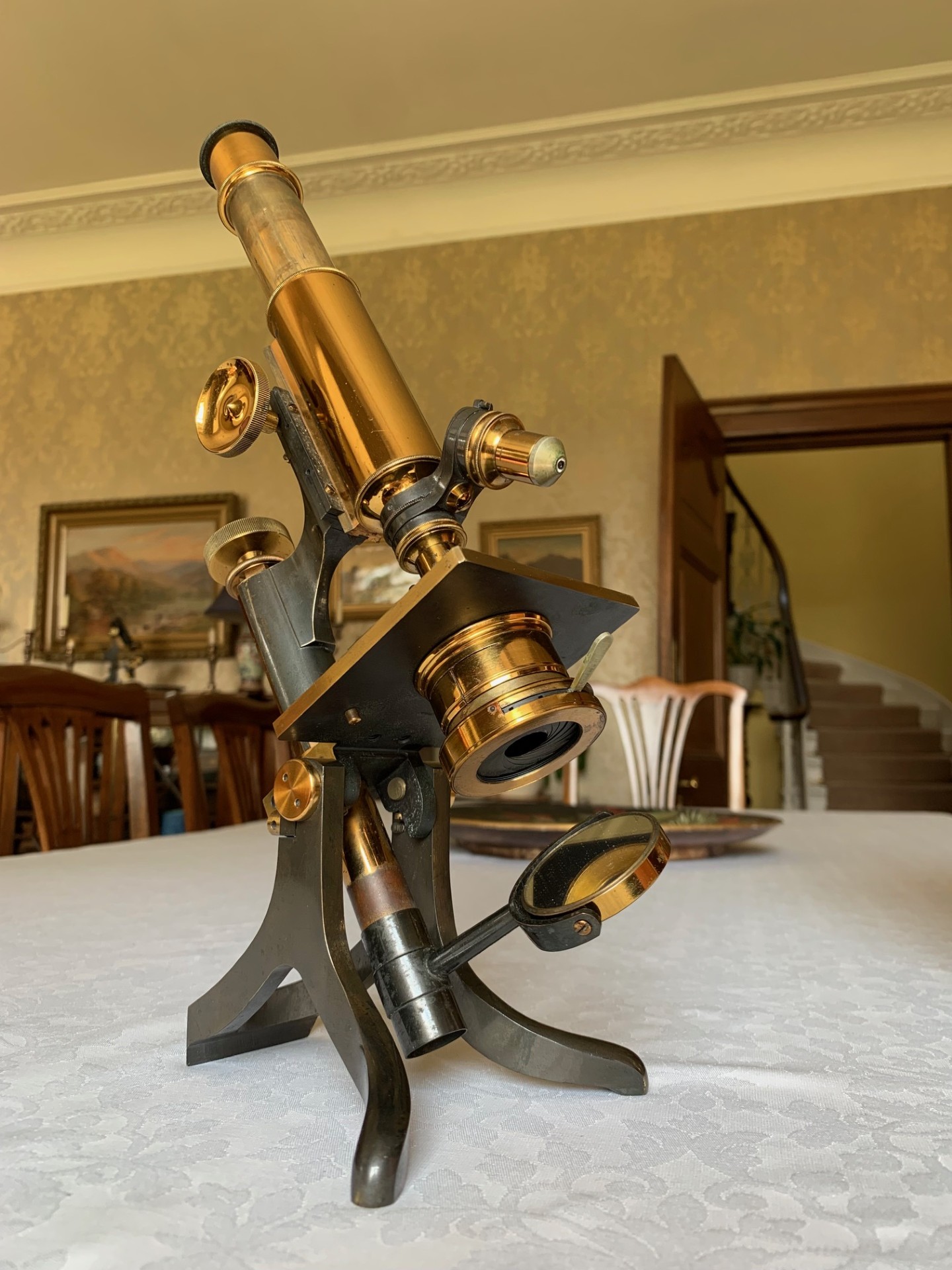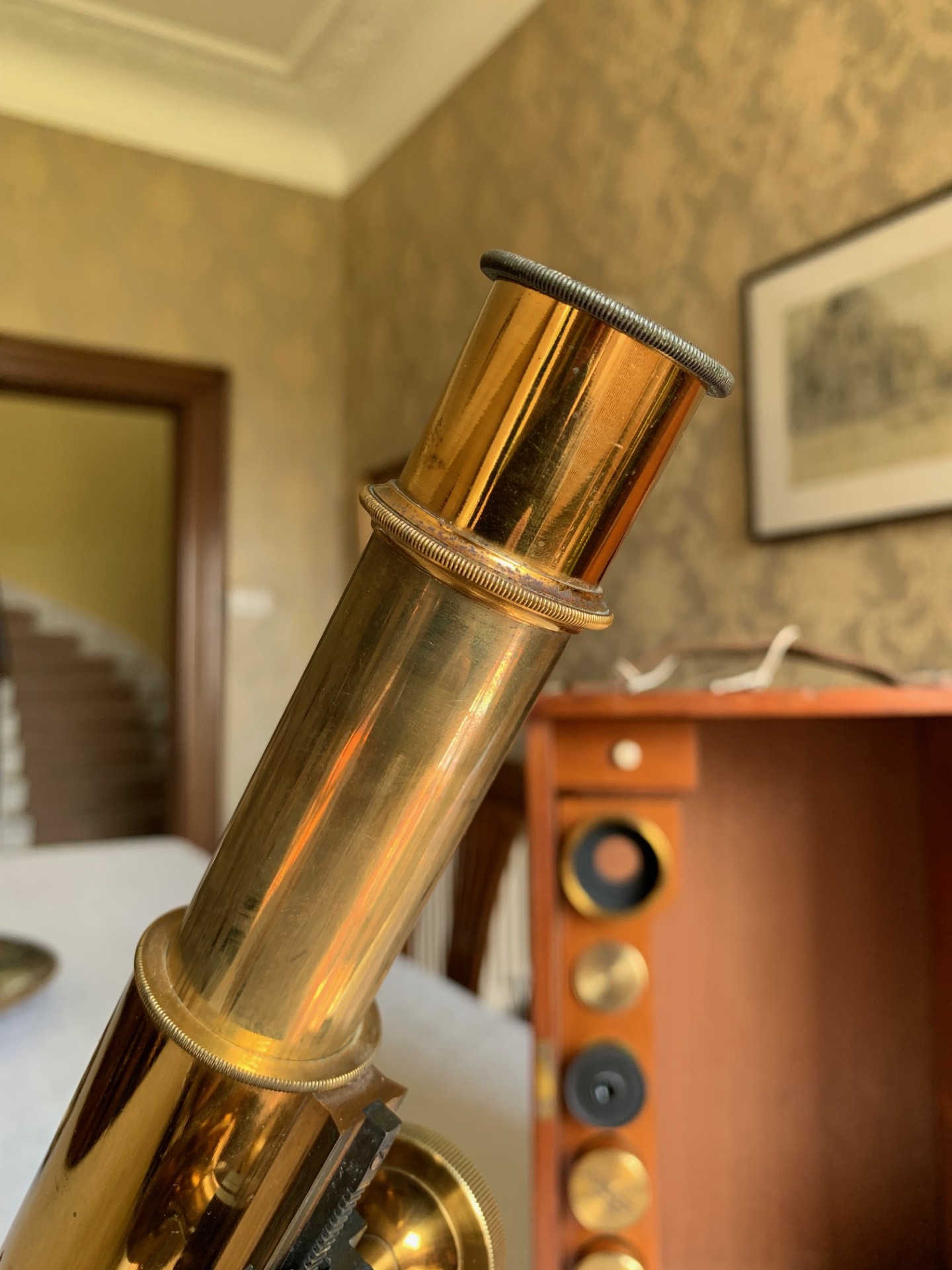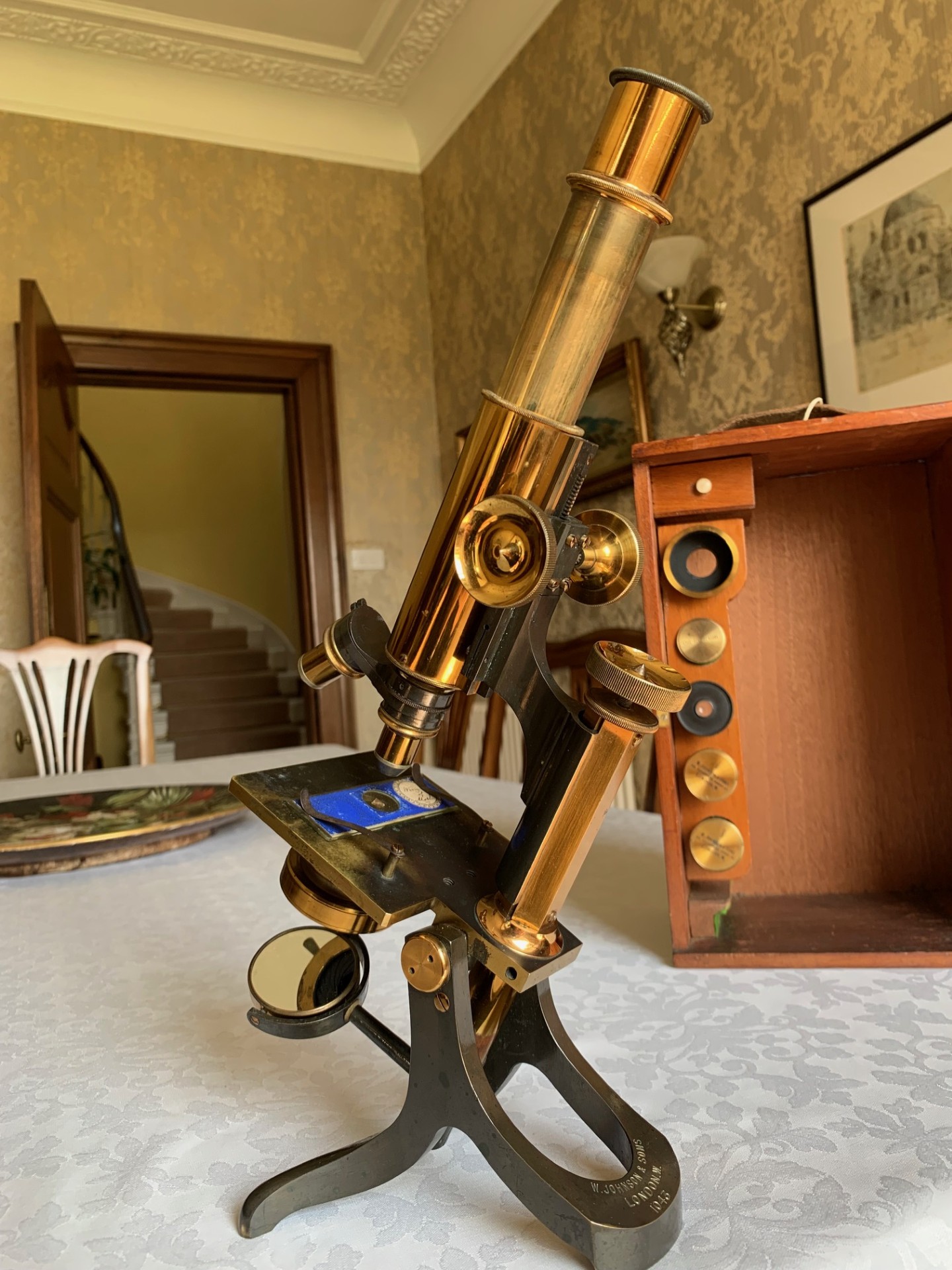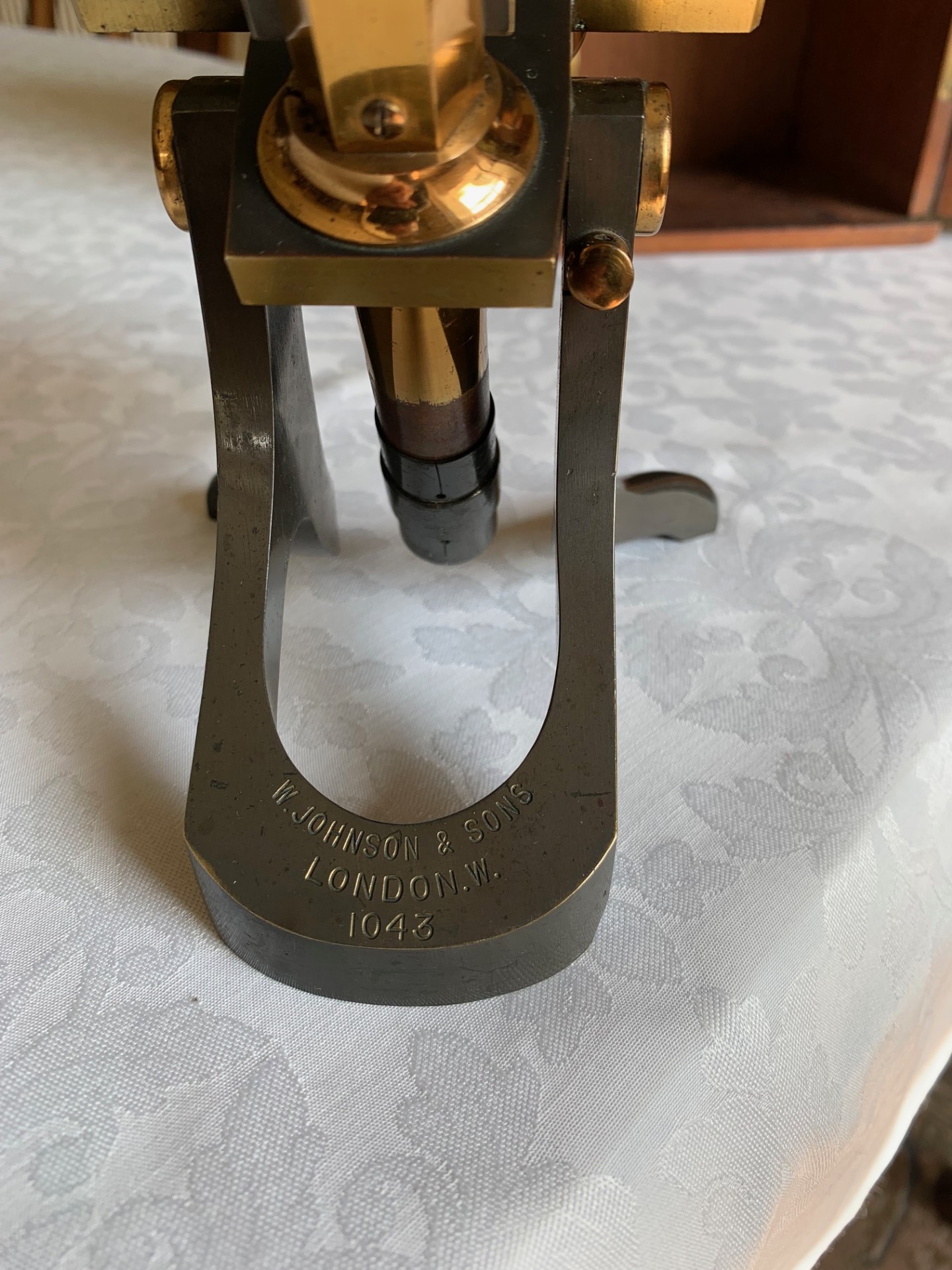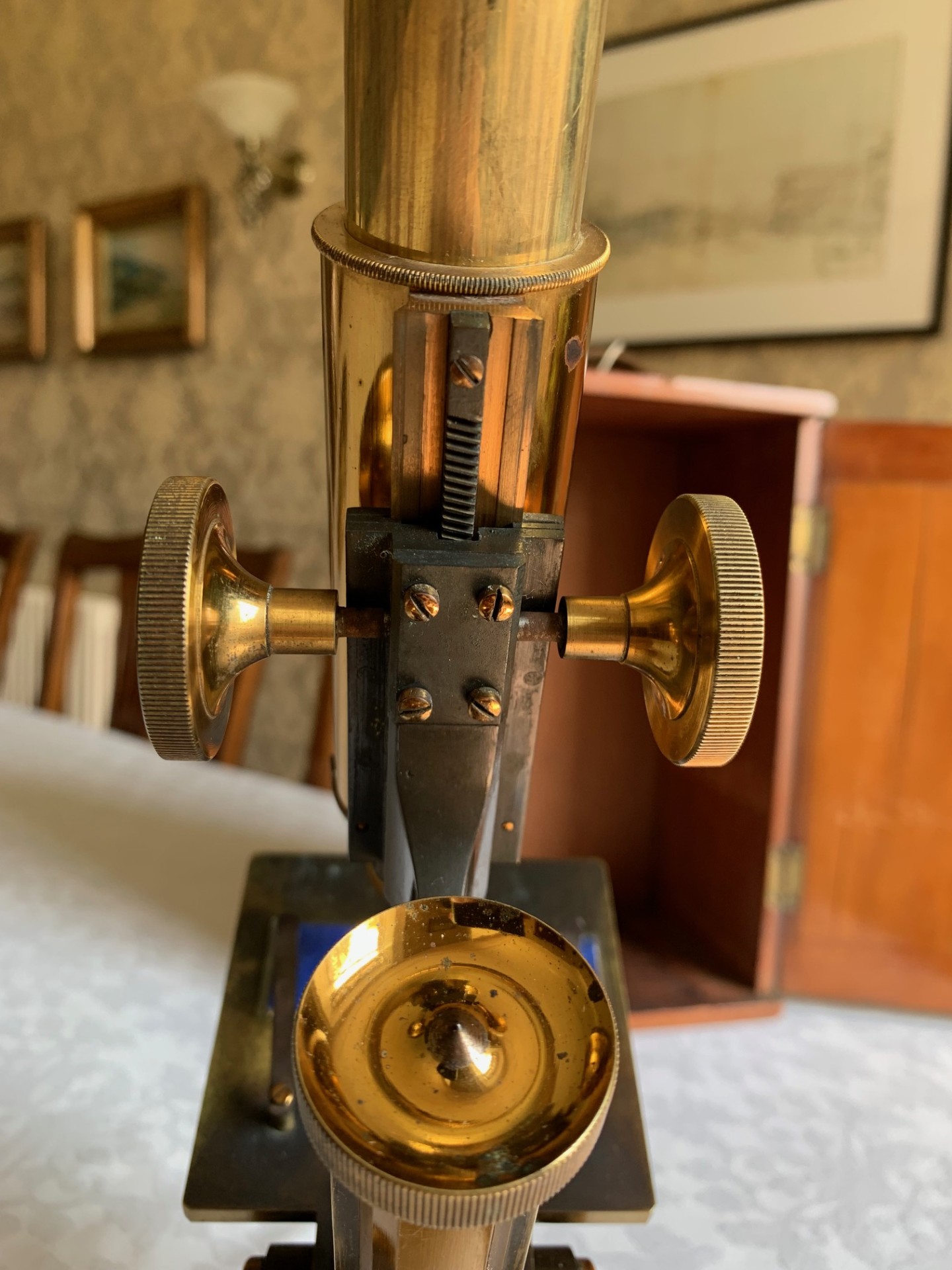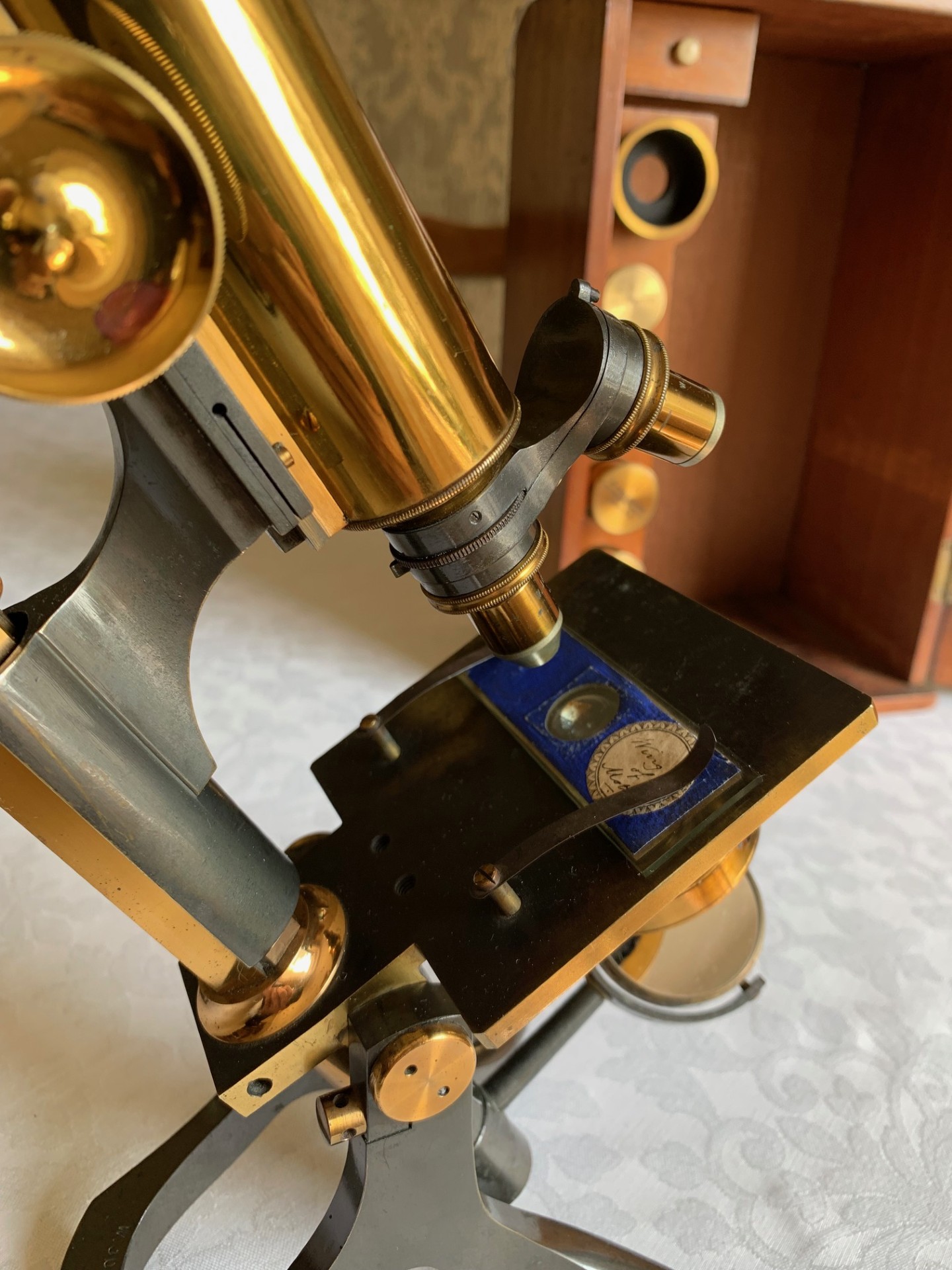Antique W. Johnson & Sons – Histology-type Brass Microscope – circa 1900, Cased
£265
Very well kept and good working condition example of a compact histology-type monocular brass microscope by London makers W. Johnson & Sons, supplied with a good set of optics and a quality hardwood storage case.
Circa
1900
Maker
W. Johnson & Sons, London
Country of manufacture
UK and Ireland
Description
Offered for sale is a very good example of an antique monocular brass microscope by London makers W. Johnson & Sons, bearing production reference number 1043, with the instrument likely to date to the 1900 to 1910 period. The condition is generally really good, with only a few minor age and use appropriate signs of wear to the finish on the instrument and just the right time worn look to its lacquered finish and brass-work. This example also has a nice set of eyepieces and objective lenses and may well therefore be quite a sought-after example in view of the obvious build-quality, good optics and completeness of the instrument. Being a compact instrument it’s also a good proposition for display, say on a desk-top when set up with a suitable antique slide – and it’s also perfectly usable producing some nice bright images.
Turning to the main technical details of this quality monocular microscope of continental design, we have the following:
1) Crouch-style tripod construction and twin uprights in anodised brass finish, with Continental-style column/upper limb in anodised and lacquered brass finish. Note that this model is inclinable and holds position well on adjustment, with tension adjustment available at the pivot point as required.
2) A monocular eyepiece unit with non-graduated brass draw-tube, with two eyepieces giving a useful range of magnification as under:
8x magnification No. 3
10x magnification No. 4
3) The instrument’s main coarse focus is controlled a set of thumb-wheels with smooth action and diagonal cut rack – travel and focus are both very good with the optical tube holding in position as it should. Fine focus is via a single brass thumb-wheel on the top of the column that also has a smooth action being freshly lubricated.
4) There are three good quality objective lenses on the double turret, as follows:
– 10x – 2/3rds inch by Johnson
– 40x – 16th inch by Johnson
– 100x – 1/12th inch oil immersion – unbranded
(the objectives all have their correct period brass canisters)
The objective lenses and eyepieces supplied therefore provide an effective magnification range from around 80x up to 800x magnification when using the highest power lens/eyepiece combination along with oil immersion and with good lighting.
5) The stage is of a square design in brass with some signs of surface patination. It’s currently fitted with a pair of brass slide clips for holding slides steady which work quite well. There are also two other holes in the stage surface for locating tools such as stage forceps.
6) Sub-stage there’s a brass mount for friction-fit accessories, which are supplied as follows:
– fixed aperture
– Abbe-type condenser with working iris – shown fitted in listing photos
7) Lighting is provided by plano-concave mirror on a gimbal mount with height and swing adjustment and good intact silvering to both sides.
8) There is a hardwood case with internal storage recesses for lenses, eyepieces and sub-stage accessories. The case is in pretty good condition for its age, with a lovely exterior sheen and hardly any loss of finish to the external surfaces. It’s also got a working lock with key and a leather carry-handle.
In summary, this is a nice clean example of a compact antique monocular microscope in very good condition for its age. This example may therefore appeal to collectors as well as specialists seeking a quality brass instrument for use and/or display and being compact it’s a perfect desk-top accessory.
Despite its compact dimensions this is also quite a heavy microscope especially with the wooden storage case, so owing to its delicacy and weight it will be very well packed and dispatched by insured courier upon receipt of cleared funds.
Thanks for looking.
Ask the Dealer
Dealer information
 Arcboutant Scientific
Arcboutant Scientific
Howard Nutton based in Glasgow Scotland with a background in Natural Science along with previous career in risk management. I obtained my first antique microscope in 1988 - it was a Watson Edinburgh model H serial number 23604 - dating it to 1918. Since that time I've owned and restored hundreds of similar instruments. As Arcboutant Scientific now also making available personally curated fine examples, principally of antique microscopes and associated scientific equipment by quality English and Continental makers, to collectors world-wide.




